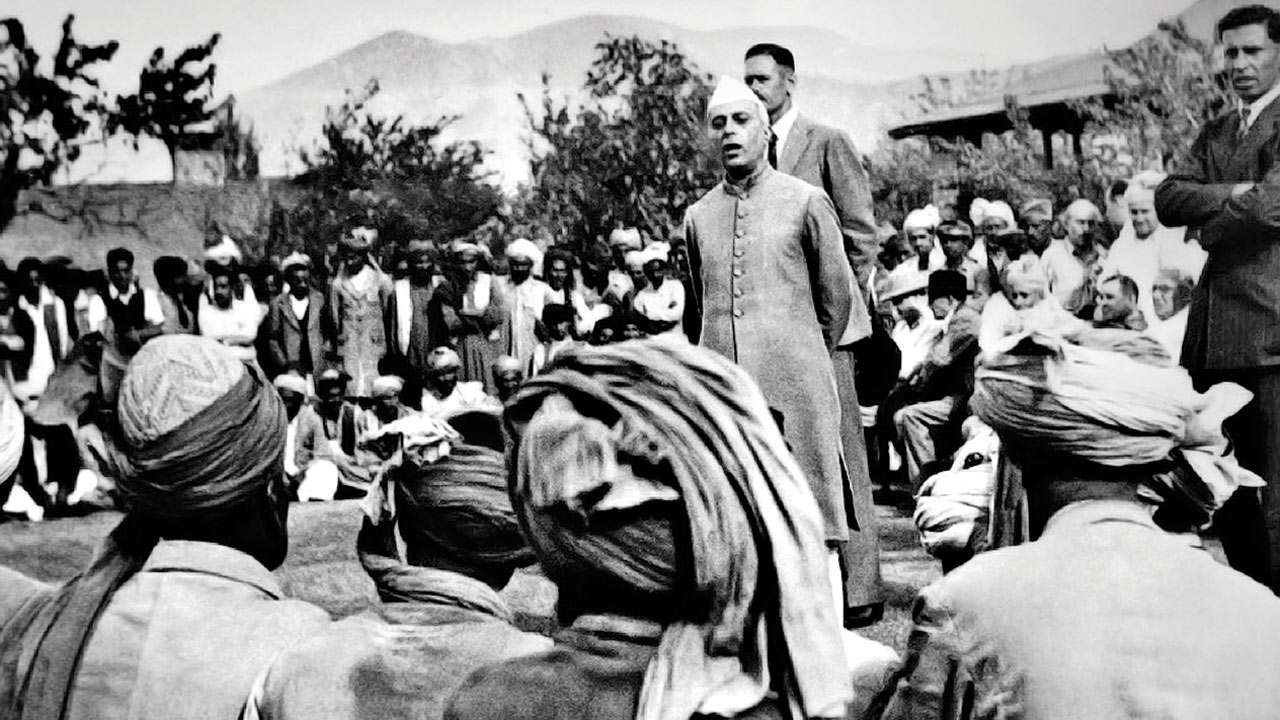
The Partition of India in 1947 remains a forever-fascinating, never-ending narrative that engages our minds and touching our hearts. Its histories and stories, through books, films and theatre have captured the imagination of generations.
Every theme of the Partition is constantly being explored. The more we dig into those dramatic-traumatic years, the more facts and facets, personalities and perspectives unfold.
Debates abound around the roles and responsibilities of Mahatma Gandhi-Pandit Nehru-Sardar Patel-Dr Ambedkar, their personal and public lives continuously under scrutiny. It is as if the Partition just happened yesterday, and not 72 long years ago.
Raghvendra Singh’s book ‘India’s Lost Frontier — The story of North-West Frontier Province of Pakistan’ (Rupa, 2019) delves deep into one captivating chapter of Partition history. A former civil servant, who helmed the Ministry of Culture, Textiles as Secretary to Government of India, Singh narrates a complex history about a turbulent region with ease and finesse of a seasoned chronicler.
His research is focused on North-West Frontier Province (NWFP) and how it fell out of India’s grasp in 1946-47. Those were roller-coaster years of frenzied politics, chaotic alliances and misalliances, horrifying riots and curfews, speedy changes at the top of the imperial administrative order and tectonic shifts in India’s own political spectrum.
At the launch ceremony of ‘India’s Lost Frontier’ on August 7, 2019, at a packed Nehru Memorial Museum & Library Auditorium in New Delhi, with former President Pranab Mukherjee as chief guest, Singh remarked, “What surprises me most is how ignorant we have become of the NWPF, even though the province is barely a few hours’ drive away from our Punjab border!” Needless to say as a frontier province, NWFP has always commanded strategic and tactical importance.
This meticulously researched 500-page book spares no effort in presenting a broad sweep of its brutal history and iconic personalities.
Singh’s focal point is the executive decree of Mohammed Ali Jinnah, as Pakistan’s first Governor General immediately after Independence, dismissing the constitutionally-elected cabinet of NWFP under the Congress leader Dr Khan Saheb and installing a Muslim League ministry on August 23, 1947.
“The Muslim League, led by Jinnah, had come to power in the newly-created state of Pakistan, but in NWPF, surprisingly, the Congress administration continued to be in place. Overwhelmingly Muslim, the NWPF had voted for the Congress, a party which the Muslim League accused of being Hindu,” he writes in the opening pages, adding, “For the NWPF, where 92 per cent of the population was Muslim to then be governed by a Congress ministry was a complete denial of Jinnah’s logic of two communities or two-nation theory. It was therefore imperative for the Muslim League to win over the NWFP for Pakistan.”
“Jinnah had unrelentingly accused the Indian National Congress of espousing ‘Hindu nationalism’ on the grounds that it was a Hindu body — which it was by virtue of its ethos, if not by ideology and composition — and he pitted ‘Muslim nationalism’ against it. If at all, it was the concept of ‘Islamic nationhood’ which brooked religion. This of course played out advantageously for Jinnah in the NWFP. ‘Islam is in danger’, the clarion call of the Muslim League in 1946-47 was a far bigger draw than ethnic or religious fidelity. Loyalty to Islam triumphed.”
Singh now poses a major question. “With the ceding of Jinnah’s demand,” he writes, “India now stood divided in August 1947. The curse of communalism stayed, however. The issue of Muslim minoritism refused to get resolved. But the Muslims were not in a minority in NWFP. Then why did the issue come up there? No other community raised this issue. This question begs enquiry.”
Across 16 chapters, each reading like a painstakingly-referenced monograph, Singh presents the history and geography of the ‘land of insolence’ that is NWFP and Afghanistan, the years between the Great Wars, before rolling out the galaxy of personalities who were guiding the destiny of not just the Indian subcontinent, but also Her Majesty’s Government and the future of Britain as a colonial power.
The reader comes face-to-face with the Viceroys, the reserved Lord Wavell and larger-than-life Lord Mountbatten, Governors like Sir George Cunningham and Sir Olaf Caroe (both of whom institutions in themselves as far as governing NWFP was concerned); then of course, Pandit Jawaharlal Nehru, Mahatma Gandhi (endearingly addressed as Malang Baba in this region), the towering presence of Khan Abdul Ghaffar Khan and his elder brother Dr Khan Saheb; the ‘difficult’ Muhammad Ali Jinnah and, in Kashmir, Abdul Qayyum Khan.
Having gleaned through innumerable volumes of ‘The Transfer of Power’ series (edited by the inimitable Nicholas Mansergh and Penderel Moon), Singh’s linear narrative in each chapter is a delight as the diligent bureaucrat in him tirelessly weaves the story, presenting confidential papers, agendas, documents and intelligence reports.
Many papers were de-classified recently; others have been reinterpreted with Singh pointing out changes, for example, between the agenda of an important meeting and its final report submitted to the Viceroy. Trust a civil servant to dig out these subtle differences which make ‘The Lost Frontier’ such a readable ‘why-dunnit’.
For researchers-students, the notes accompanying each chapter are worthy of emulation, with every proper noun neatly enumerated. Salaams to Raghvendra Singh for bringing NWFP of the 1930s and 1940s back into public memory and national discourse. There is so much more of the NWFP saga still to unravel.
Author is researcher, writer, journalist and communications consultant